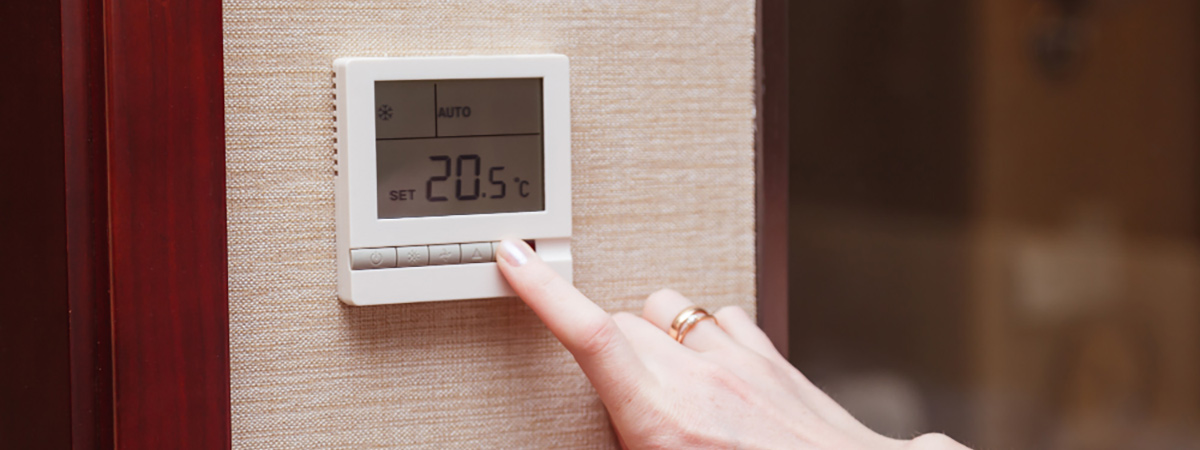Summers are setting in Denver, and it’s time to start thinking about your home air conditioning system. Temperatures can get unbearably brutal here, but in summers, the need for cooling is going to be undeniable. The smart move is to be prepared in advance for the hot days ahead.
Your air conditioners act as lifesavers in the heat when they blow in cool breezes on hot afternoons. Still, there are a few steps that need to be taken before turning on your air conditioners. Completing these steps will ensure the efficiency and effectiveness of your cooling systems when the summer kicks in.
Steps to Follow Before Turning on Your Air Conditioner include:
- Uncover and Clean Up
- Check the Thermostat
- Look for Exposed Ductwork
- Clear the Drain Line
- Clear the Vents
- Change/Clean your Air Filters
- Visual Inspection of Refrigerant Lines
- Check Wiring
Uncover and Clean Up
Responsible homeowners know the significance of covering up the units for months when they are not in use. These specially designed outdoor and indoor unit covers do a great job of protecting the systems from weather and debris.
Take off the cover and conduct a visual inspection of your unit to check if anything like leaves or insects are stuck to it, and remove them. Clean up the area around the outdoor condenser unit as well. For cleaning up the outdoor unit, follow the safety guidelines and cleaning instructions on the warranty manual.
Check the Thermostat
For central cooling systems, have a thorough look at your thermostat. Let JD’s Plumbing Plumbing Heating & Air Conditioning conduct a professional AC and furnace inspection and ensure its proper working. We can also suggest you go for a new programmable thermostat.

Also Check Out: When Is The Best Time For An AC Replacement?
Look for Exposed Ductwork
Leakages in the ductwork lead to loss of cool air. This makes homeowners frustrated as they face an inadequate supply of cool air, and as a result, they keep decreasing the temperature on the thermostat without much effect. This makes the energy costs shoot up. The best way to avoid such a scenario is to get the exposed ductwork fixed with the help of certified HVAC professionals who will ensure that your system throws in cool air without loss through possible leakages.
Clear the Drain Line
The drain line is present in both central cooling and wall-mounted split air condition systems. For central systems, the drain line is by the indoor cooling coil above the furnace in the basement. For wall-mounted indoor units, it’s a very visible drain pipe going out of your unit. In both cases, make sure it is not clogged, so that water for condensation effectively gets drained out without affecting the cooling performance.
Clear the Vents
Vents in central cooling and HVAC systems get coated with debris throughout the season. Conduct an inspection of the vents around your house and check for possible blockages. Also, remove items like toys or furniture from in front of the vents for optimal airflow.
Change/Clean your Air Filters
It’s still not the time to turn on the cooling action. First, check the condition of your air filters. For central units, regular filter replacement is the best preventive measure to solve the unit’s efficiency problems. AC replacement filters are available at all home appliance stores and even supermarkets. We recommend that you change filters every three months for the best results. When installing a new filter, make sure that it fits right in, and no gaps are left.
For a wall-mounted indoor split unit, open up the front panel to access the filters. These can usually be washed to clear away dust and debris, but make sure to consult the owner’s manual first. Clean them up and reinstall them before you turn the air conditioner on.
Visual Inspection of Refrigerant Lines
Check the insulation of your refrigerant lines. Look for cracks that can significantly decrease the cooling performance. If you notice that repairs are required or you are unsure, the best course of action is to call a certified HVAC professional right away. Do not try to fix the insulation of the refrigerant lines by yourself as it can lead to damage and can be a safety hazard.
You May Want To Read: How to Maximize Air Conditioning Effectiveness This Summer
Check Wiring
A visual examination of the wiring will reveal the possibility of tears or breakages. Proper wiring leads to the efficient working of air conditioners. You might have noticed your AC shutting off when the circuit breaker trips. If you find breakages in the circuit or wires, call an HVAC expert as soon as possible. Instead of fixing it all by yourself, let JD’s Plumbing Plumbing Heating & AC take care of your needs.
Now it’s time to flip that ON switch, finally, after completing all the recommended steps and listen for that steady ‘hmmm’ sound to ensure that the fan is working fine.
It is also a good idea to schedule an annual HVAC maintenance or servicing visit by an expert to keep your air conditioner working well. Well-maintained systems run efficiently, save you money on your electricity bills and improve the working lifespan of your cooling system.






